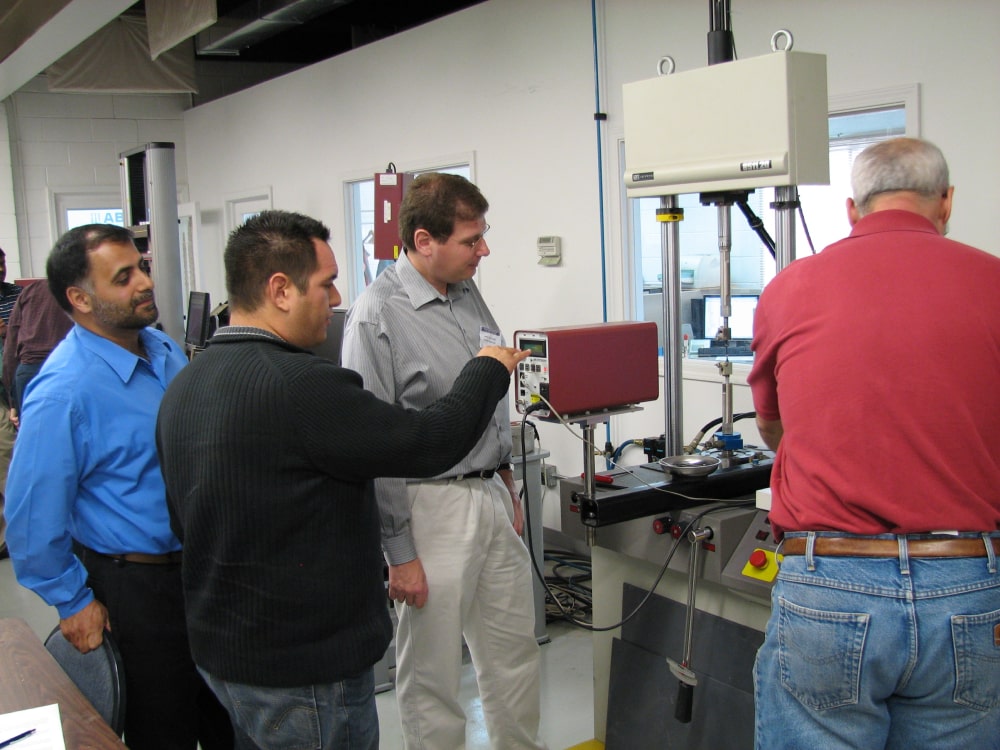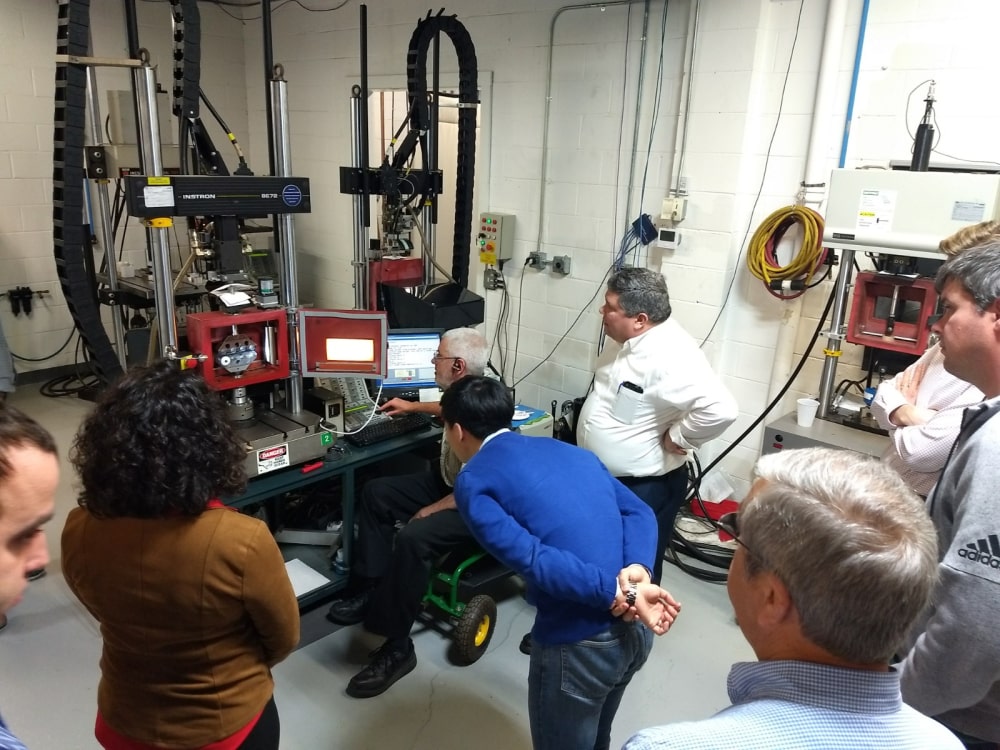Endurica Training: Characterizing Elastomer Fatigue Behavior for Analysis and Engineering
Introduction
Elastomers are outstanding in their ability to repeatedly endure large deformations, and they are often applied where fatigue performance is a critical consideration. Because the macromolecular structure of elastomers gives rise to a number of unique behaviors, appropriately specialized methods are needed to characterize, analyze, and design for durability. This 3-day course provides the know-how for engineering durable elastomeric components and systems. The course includes live demos of typical behavior.
Workshop Date
- April 10-12, 2024
-
Upcoming Session:
Fall 2024 - details to come
Location
-
Axel Products facility:
2255 S Industrial Hwy.
Ann Arbor MI 48104 USA
Price
- $2500
Registration Form
Detailed Workshop Description
Workshop Outline
- Elastomers as an engineered material.
- Stress-strain behavior: physics, phenomenology, characterization, and modeling.
- Self-heating in elastomers.
- Physics of elastomer fatigue.
- Phenomenology of durability: strength, fatigue threshold, R-ratio effects, the Haigh diagram.
- Crack Nucleation and Fracture Mechanics analysis approaches.
- Factors that affect fatigue behavior.
- Material characterization for fatigue life assessment.
- Dealing with multiaxial loading.
- Dealing with variable amplitude loading and damage accumulation.
- Finite Element modeling for fatigue life prediction.
Course Objectives
- Know the physics and factors that govern rubber’s fatigue behavior.
- Use accurate models and efficient procedures to characterize fatigue behavior.
- Take advantage of test strategies that minimize risk and maximize productivity.
- Use crack nucleation and fracture mechanics approaches effectively.
- Use characterization to inform accurate fatigue calculations.
- Use characterization to diagnose and solve development issues.
Format
The course includes lectures, live lab demos, and hands-on exercises focused on processing and interpreting experimental measurements of fatigue behavior. Lunch, snacks, and dinner on Day 1 included.
Instructor
Thomas G. Ebbott, Ph.D. Tom is a tire industry veteran known for his leadership in driving advances in modeling, simulation and workflows across a global organization. He joined Endurica in 2022 after a 35-year career at Goodyear. While at Goodyear, he held various technical and leadership positions with experience in product development, modeling and simulation, and materials characterization. He was a major contributor to the technical partnership between Goodyear and Sandia National Laboratories. He also enjoyed a two-year assignment at Goodyear’s technical center in Luxembourg as the Manager of Computational Mechanics. He has received numerous awards for his scientific contributions including 4 Superior Paper awards from the Tire Society. His published works include topics such as fracture mechanics and crack growth in rubber; fatigue of cord-rubber composites; non-linear viscoelasticity and constitutive modeling; tire rolling resistance and temperature prediction.
Agenda
Day 1: 8:30 – 4:45 pm, 6 pm Course Dinner
- Elastomers as engineered materials
- Design, Analysis and Characterization for Durability with Rubber
- Stiffness, mode of control, compound optimization
- Stress-strain – molecular origins and hyperelasticity
- Stress-strain – cyclic phenomena and advanced models
- Self-heating in rubber
- Tearing energy
Day 2: 8:15 – 4:45 pm
- Characterizing strength of rubber
- The fatigue threshold
- Strategic considerations in fatigue testing
- Characterizing Fatigue behavior of individual cracks – fully relaxing cycles
- Characterizing Fatigue behavior – nonrelaxing cycles and strain crystallization
- Crack nucleation, S-N curves, Continuum Damage
Day 3: 8:15 – 3:00 pm
- Characterizing crack precursor size
- Rubber’s Fatigue Design Envelope
- Aging
- Multiaxial loading and Critical Plane Analysis
- Fatigue in tension, shear, and compression
- Variable amplitude loading, Rainflow counting, and damage accumulation
- Component testing



